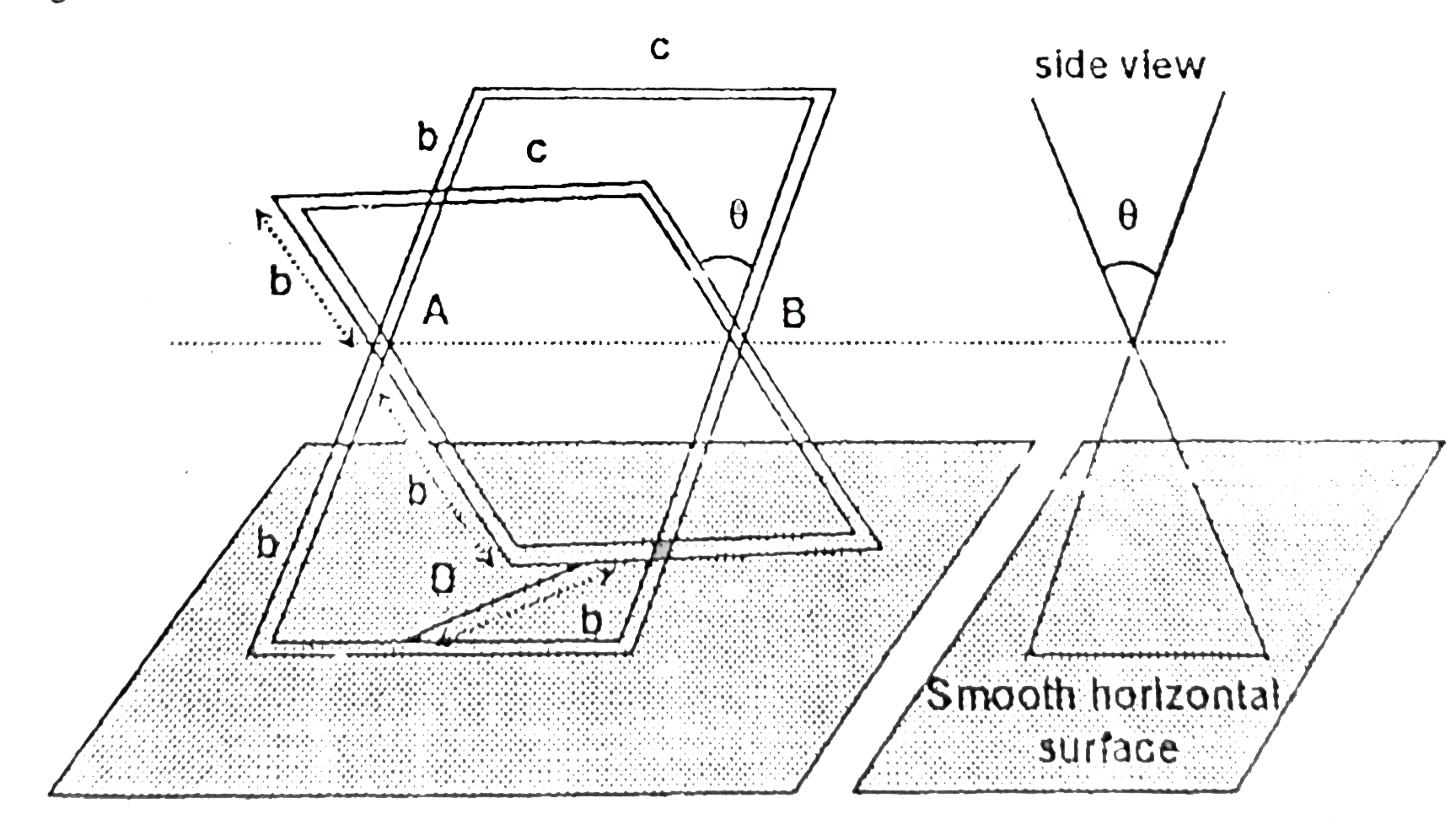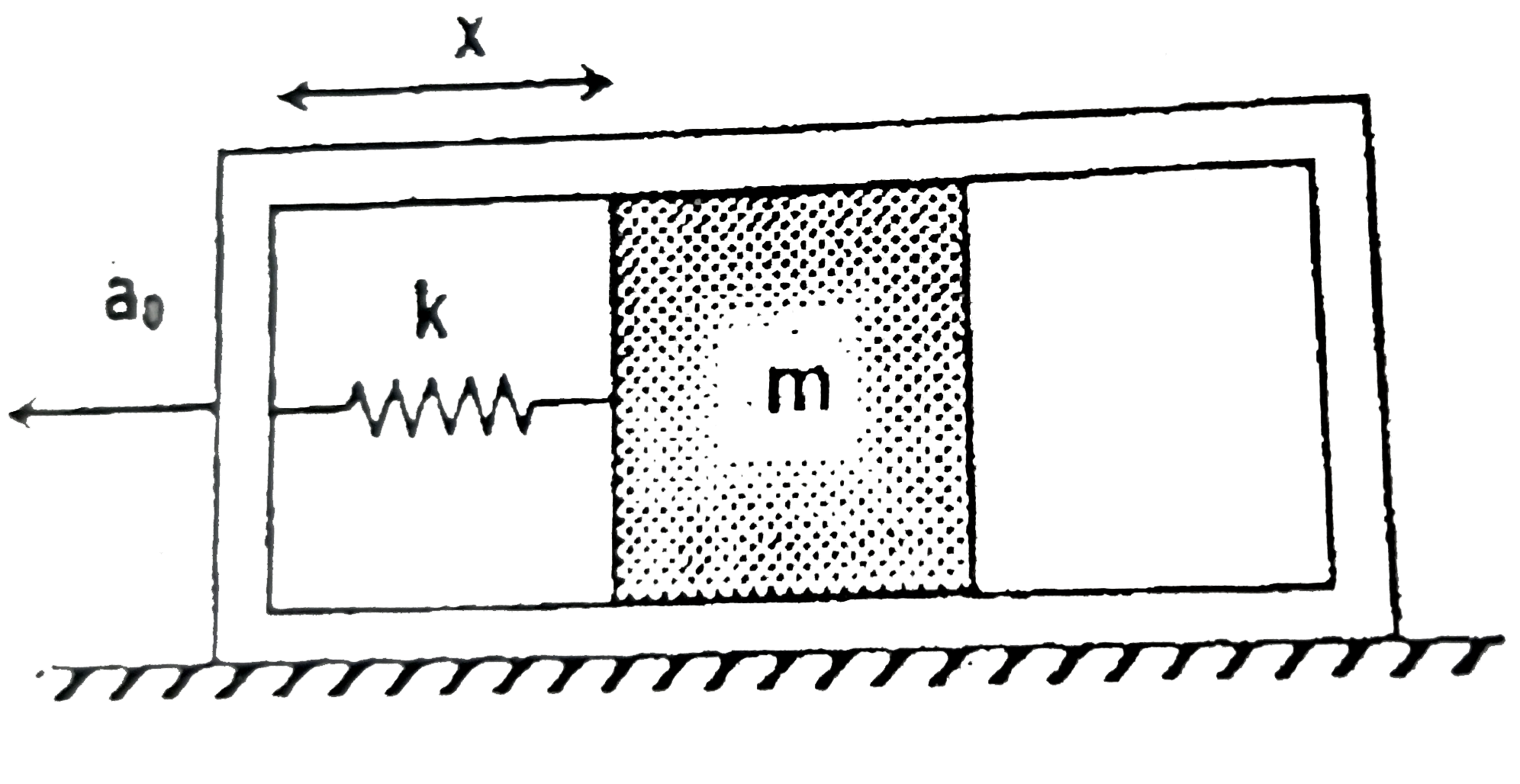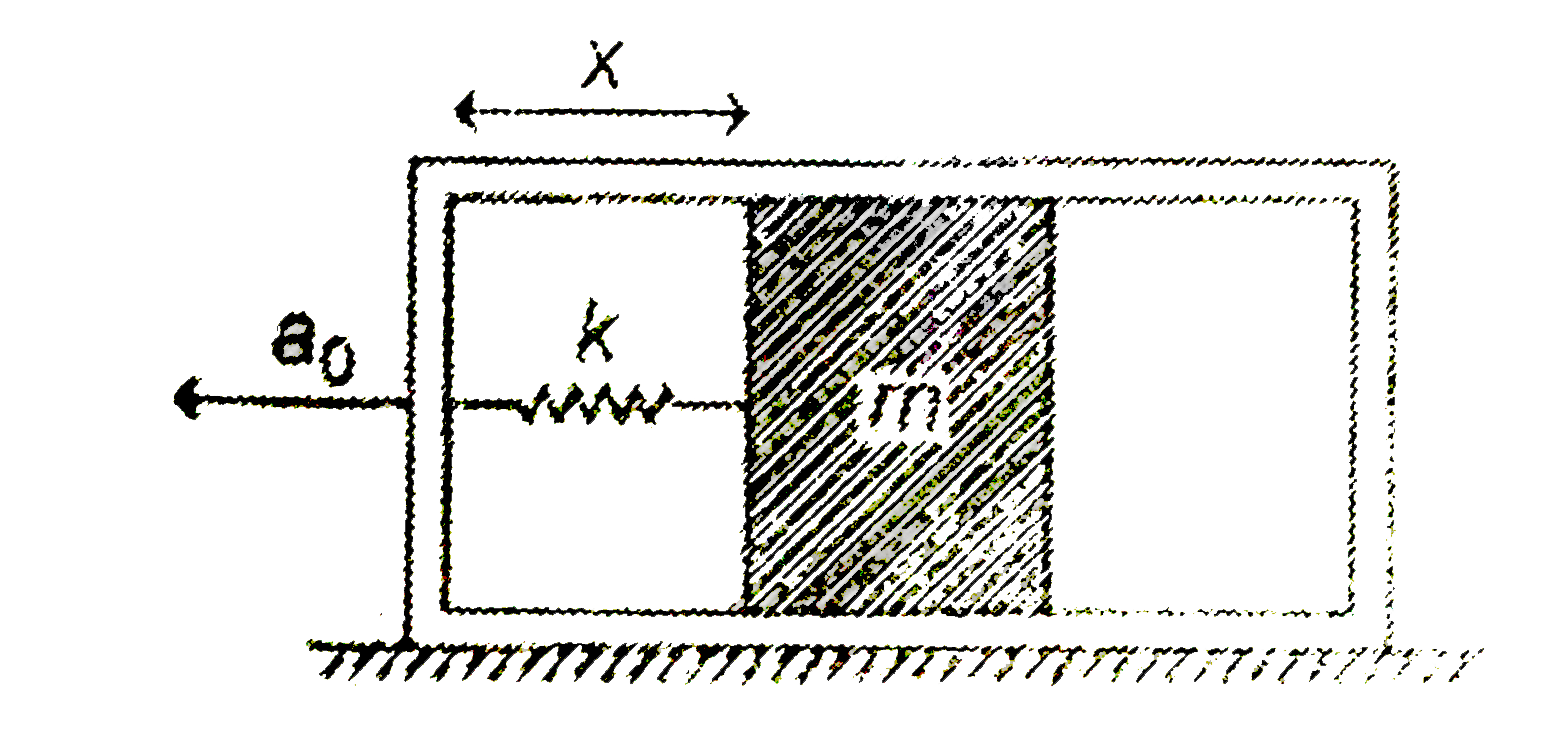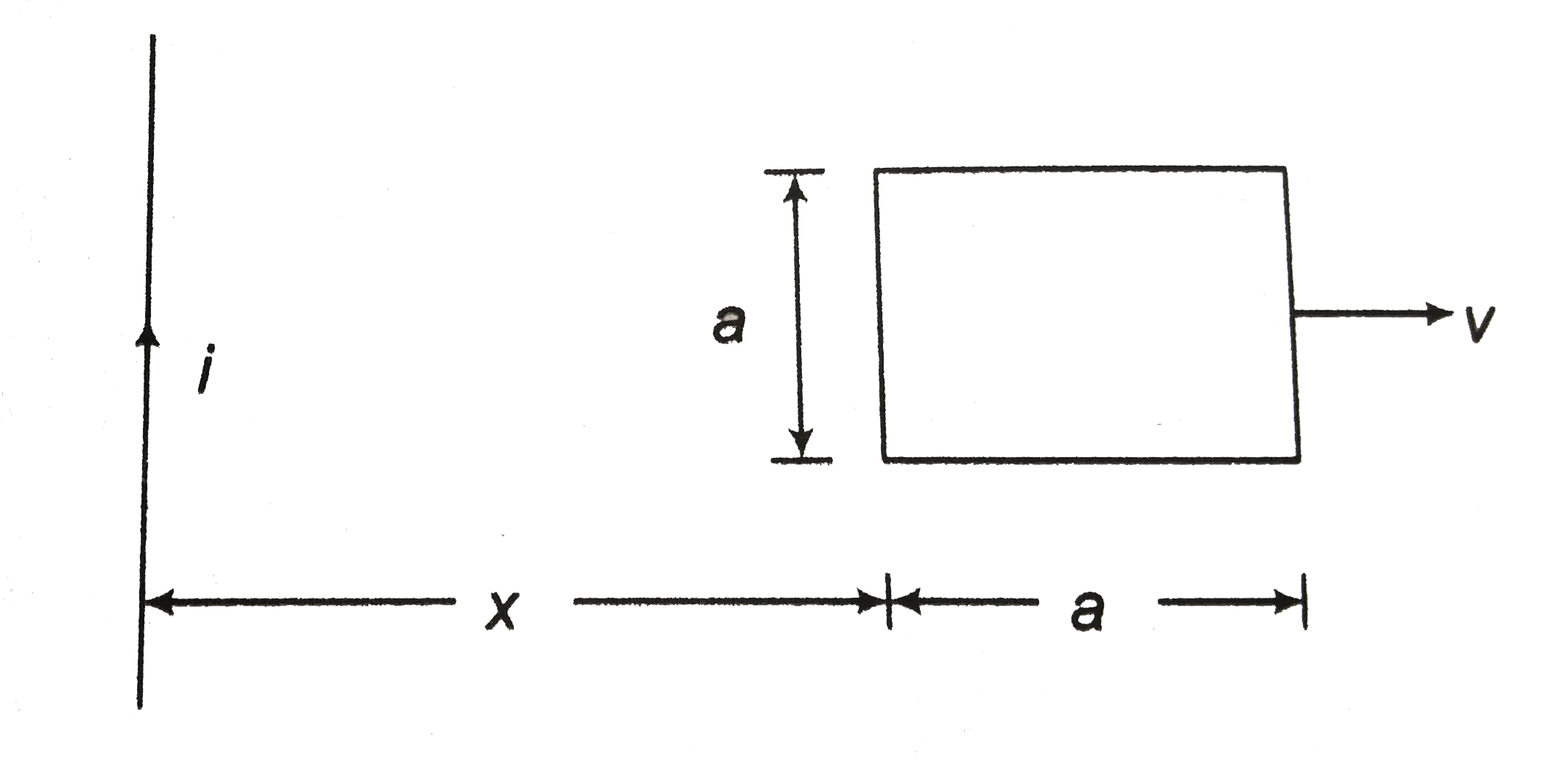The two indentical rectangular stell frames with the dimensions shown are farbricted from a bar of the same material and are hinged. Rectangular at the midpoints A and B of their side (3m×1m). If the frame is resting in the position shown on a horizontal surface with negligible friction, determine the velocity v with which each of the upper ends of the frame hits the horizontal surface if the cord D is cut. (Take the value of dimensions shown in the figure c=1m, b=3/2m and θ=174∘ i.e., sinθ2=35 and cosθ2=45 & g=10m/s2)

5m/s
8m/s
3m/s
4m/s
Let the mass per unit length of the bar be λ(kg/m)
As the frames come down, the point B moves vertically downwards and PP' remain in contact with the ground. In the final state (when PQ, P'Q' just become horizontal), the velocitites of P (and P') is zero. The vertical component was already zero, the horizontal component also becomes zero. The motion of PQ is essentially rotation about P at that instant. Conservation of mechanical energy gives (for PQ) :

(2λ+6λ)g(3)2cos37∘=12(13⋅6λ⋅32+λ⋅32)ω2
and vQ=ω⋅PQ=ω×3=8m/s
Topper's Solved these Questions
- BOOK - FIITJEECHAPTER - GMP ASSESMENTEXERCISE - Assertion & Reason15videos
GMP ASSESMENT
- BOOK - FIITJEECHAPTER - GMP ASSESMENTEXERCISE - Multiple Question58videos
GMP ASSESMENT
- BOOK - FIITJEECHAPTER - GMP ASSESMENTEXERCISE - Numerical Based61videos
GMP ASSESMENT
- BOOK - FIITJEECHAPTER - GENERAL PHYSICSEXERCISE - MATRIX MATCH TYPE3videos
GENERAL PHYSICS
- BOOK - FIITJEECHAPTER - GRAVITATIONEXERCISE - Numerical based Question2videos
GRAVITATION
Similar Questions
A rectangular block is kept on a rough horizontal surface and given some initial velocity. The coefficient of friction between the block and the surface is constant. The block will topple
View SolutionA block of mass m is attached to the frame by a light spring of stiffness k. The frame and block are initially at rest with x=x0, the uncompressed length of the spring. If the frame is given a constant horizontal acceleration a0 towards left, determine the maximum velocity (vret)max of the block relative to the frame (block is free to move inside frame). Ignore any friction.
 View Solution
View Solution
Knowledge Check
- Question 1 - Select One
In the figure shown, the cart of mass 6m is initially at rest. A particle of mass m is attached to the end of the light rod which can rotate freely about A. If the rod is released from rest in a horizontal position shown, determine the velocity vrel of the particle with respect to the cart when the rod is vertical. (Assume frictionless surface)
 A√73glB√76glC√143glD√83gl
A√73glB√76glC√143glD√83gl - Question 2 - Select One
A block of mass m is attached to a frame by a light spring of force constant k. The frame and block are initially at rest with x=x0, the natural length of the spring. If the frame is given a constant horizontal accelration a0 towards left, determine the maximum velocity of the block relative to the frame (block is free to move inside frame). Ignore any friction.
 Aa0√m2kBa0√2mkCa0√mkD12a0√mk
Aa0√m2kBa0√2mkCa0√mkD12a0√mk - Question 3 - Select One
A solenoid is wound over a rectangular frame. If all the linear dimensions of the frame are increased by a factor 3 and the number of turns per unit length remains the same, the self inductance increased by a factor of:
A3B9C27D63
A square frame with side a and a long straight wire carrying a current i are located in the same plane as m shown in figure. The fram translates to the right with a constant velocity v. Find the emf induced in the frame as a function of distance x.
 View Solution
View SolutionA solenoid wound over a rectangular frame . If all the linear dimensions of the frame are increased by a factor 3 and the number of turns per unit length remains the same , the self inductance increased by a factor of :-
View Solution
A triangular frame consists of three identical rods, each of mass m and length l. It rests upright on a horizontal smooth surface with its lower right corner against a stop about which thhe frame could pivot. A horizontal force of magnitude F is applied to the upper come of the frame as shown in the figure. what is the largest value of F may have without causing the frame to pivot upward about the stop?View SolutionABC is an equilateral triangular frame of mass m and side r. It is at rest under the action of horizontal magnetic field B (as shown) and the gravitational field.
 View Solution
View SolutionA wire frame ABCD has a soap film. The wire BC can slide on the frame without friction and it is in equilibrium in the position shown in the figure. Find m, if T is the surface tension of the liquid.
 View Solution
View Solution
